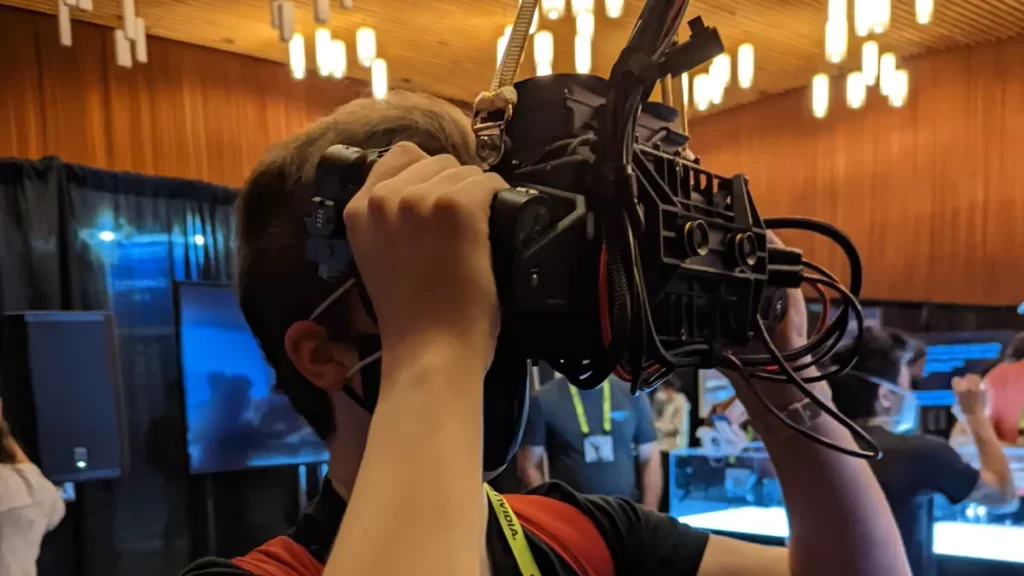
Starburst is multiple times more splendid than the Oculus Quest 2
At Siggraph 2022 – a tech occasion where specialists can flaunt their most recent undertakings – I had the chance to evaluate a model VR headset that Meta won’t ever delivery to people in general.
This isn’t whenever Meta first has displayed its model headsets. Back in June, Meta CEO Mark Zuckerberg and individuals from Meta’s Reality Labs division uncovered in excess of twelve gadgets they won’t ever send off.
One of these headsets is the Starburst – a massive VR headset that can accomplish a splendor of up to 20,000 nits, which makes it multiple times more brilliant than the Oculus Quest 2.
This additional brilliance isn’t expected to transform the headset into some sort of eye-consuming torment gadget. All things considered, it assists Meta explore different avenues regarding HDR.
HDR (high unique reach) is the tech utilized in presentations to make colors pop in brilliant scenes, meanwhile guaranteeing that dull items are definite in shadowy scenes. Televisions lacking HDR will show more muffled varieties, and scenes set in dim conditions will be minimal in excess of a shadowy mass.
By turning up the brilliance of its headsets to the levels Starburst can convey, Meta can incredibly further develop its headset’s HDR capacities. In commonsense terms, this permitted Meta to establish shocking vivid conditions.
All Of the Lights
Starburst shipped me to a coastline, a wonderfully sensible scene of waves tenderly lapping against the close by rocks.
Diverting up the brilliance from 5,000 to 10,000 nits, I was shipped to a topsy turvy like form of a similar shoreline. The sky abandoned a dazzling blue to an overcast ruby, and the once welcoming waters sparkled an unpropitious green – it was like I was in a scene from Stranger Things Season 4.
Amping things up to 20,000 nits and the scene turned out to be nearly completely dark, yet I may as yet make out the subtleties of the spread rocks around me. The main brightening was these arbitrary light emissions that would unexpectedly streak down from the sky, bouncing off the water and assisting with illustrating my environmental elements.
In spite of the climate turning out to be logically more evil, each layer looked dynamically more genuine.

This was particularly valid for Meta’s other HDR demo. As opposed to being an entire scene, Meta suspended an enormous metal marble – about the size of a b-ball – before me.
This circle was mirroring an office space back at me, and as the headset’s brilliance was turned up, the nature of the reflections improved emphatically.
The ball was dull and dark at its edges at 100 nits; similar brilliance as the best VR headsets we have today.
I could cause out the reflected situation, however it was plainly phony. At 1,000 nits – the kind of splendor you’d anticipate from one of the most amazing 4K TV’s out there – the sphere looked far more genuine, with the reflected scene becoming more clear still. Taking things up to 20,000 nits made the reflections significantly more point by point.
No single headset ought to have all that power
So in the event that Starburst can create powerful visuals, is there any good reason why Meta wouldn’t at any point hope to deliver it?
Indeed, first off, the gadget is amazingly cumbersome. As opposed to being lashed to my head, Starburst draped down from a huge metal arm utilizing a pulley; I needed to hold it to my eyes by handles on one or the other side.
If you had any desire to openly investigate a virtual space with this gadget, you’d have to invest a ton of energy preparing at the rec center.
In any case, it must be this massive, since it requires such countless particular parts to work on the backdrop illumination’s power, yet in addition to hold it back from overheating.
This additionally implies that a few different parts have must be stripped back to account for the basics. Not at all like the independent Quest 2, Starburst needed to depend on an outside PC.
Besides, Starburst is simply excessively brilliant. When gone up to its maximum splendor, the scenes must be kept genuinely dull just to keep my eyes from potentially detonating.
The couple of strong lights that enlightened the scenes nearly hurt to see, making Starburst’s encounters ones in which you would have no desire to invest a lot of energy drenched in.
The encounters that depended on Starburst’s lower splendor settings in the 1,000 – 10,000 territory weren’t simply extraordinary to check out, yet they were substantially more agreeable, as well. At some point, we may really have the option to appreciate headsets with these sorts of capacities.

While Starburst won’t ever come around, it’s having an impact in the improvement of Meta’s cutting edge equipment, for example, Project Cambria, the Oculus Quest 3, and then some.
As Mark Zuckerberg has made sense of beforehand, Meta’s models will “assist us with recognizing which specialized ways will permit us to create significant enough upgrades that we can begin moving toward visual authenticity.”
By taking different viewpoints to the limit, Meta can dissect which have the most to offer clients as far as making VR more practical and agreeable.
Starburst demonstrated to me that HDR is one region that frantically needs an update, since this moment, my faint Oculus Quest 2 isn’t comparing to what Starburst brought to the table.
Considering what amount of time improvement requires, it will probably take some time for Meta’s future headsets to get a couple of Starburst’s stunts. Be that as it may, when they at last do, we’re certain to be in for a treat.
